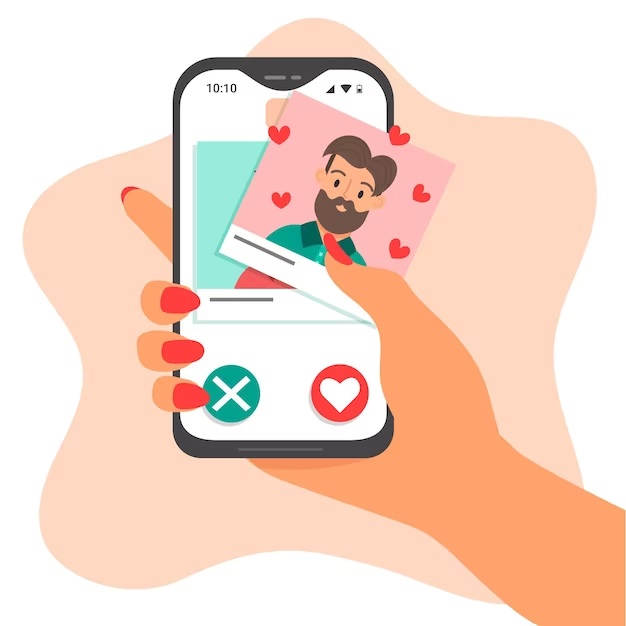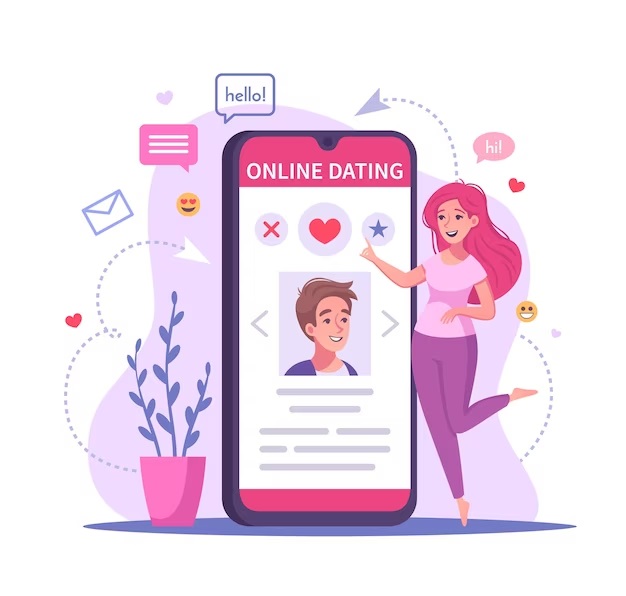Safety Tips and Guidelines for Online Flirting
Safety Tips for Online Flirting
Online flirting can be a fun and exciting experience, but it is important to keep safety in mind. When engaging with someone you have never met in person, it is important to take precautions to protect yourself. Remember that not everyone online is who they say they are, and it is important to be cautious when sharing personal information. Avoid sharing your full name, address, or phone number with someone you have just met online. It is also a good idea to use a fake name or nickname when creating your profile to help protect your identity.
Be aware of the risks associated with online flirting. It is not uncommon for people to use online dating sites and apps to scam others out of money or steal their personal information. Be wary of anyone who asks for money or requests access to sensitive information such as your bank account or social security number. If something seems too good to be true, it probably is. Use common sense and trust your instincts when it comes to online flirting.
Finally, always meet in a public place for your first date. Even if you have been talking to someone for a while online, it is important to take things slowly when meeting in person. Choose a public place for your first date such as a coffee shop or restaurant, and let a friend or family member know where you will be. If you feel uncomfortable at any point during the date, do not hesitate to leave. Online flirting can be a fun and exciting way to connect with others, but it is important to stay safe and protect yourself at all times.
Safeguarding Yourself from Dangers of Online Flirting
Online flirting can be exciting and fun, but it can also be dangerous if proper precautions are not taken. It is important to remember that not everyone online is who they claim to be. Some people use fake profiles and identities to lure others into dangerous situations. There have been numerous instances of online predators using flirting as a way to exploit vulnerable individuals. It is crucial to take steps to protect yourself from these dangers by being cautious about who you speak with and what information you share online.
One way to protect yourself from the dangers of online flirting is to be mindful of the information you share. Never give out personal information such as your full name, address, or phone number. These bits of information can be used to locate you and put you in danger. Be wary of anyone who asks for this type of information, especially if you do not know them well. Additionally, be cautious of sharing any explicit photos or videos. Once they are online, you lose control of them and they can spread quickly. Only share content with people you trust and know well.
Another way to safeguard yourself from online flirting dangers is to use reputable dating or meet-up sites. These sites often have safety measures in place such as background checks, identity verification, and moderation of content. It is also helpful to communicate with potential partners through the site’s messaging system instead of giving out personal contact information. If someone makes you feel uncomfortable, you can report them to the site and they will investigate. Remember, it is better to be safe than sorry when it comes to online flirting.
Creating an Environment of Safety and Respect in Online Flirting
Creating an environment of safety and respect in online flirting is crucial in today's digital world. With the popularity of dating apps and social media, it has become increasingly common for people to engage in online flirting. However, this can often lead to harassment, misconduct, and inappropriate behavior. Thus, it is important for users to understand the importance of creating a safe space for flirting online. This includes respecting boundaries, avoiding unsolicited messages, and ensuring that all interactions are consensual.
In order to promote safe and respectful online flirting, it is imperative to establish clear rules and guidelines. This can involve setting expectations for appropriate behavior, such as no harassment or aggressive messaging. It is also important to provide users with the option to report any abusive or inappropriate behavior, as well as ensuring that appropriate action is taken against those who violate these rules. Additionally, users should be encouraged to communicate openly and honestly with one another to establish a level of trust and respect.
Ultimately, creating an environment of safety and respect in online flirting requires a combination of individual responsibility and collective action. Users must take responsibility for their own behavior, as well as ensuring that they respect the boundaries of others. However, dating apps and social media platforms also have a key role to play in promoting safe and respectful online behavior. By developing clear guidelines, enforcing rules, and providing users with the tools they need to report inappropriate behavior, these platforms can help to create a safer online environment for everyone.
Anonymity in Online Flirting
Online flirting has become increasingly popular in recent years, with many people choosing to meet new romantic partners through dating apps, social media platforms, and other online communities. While these virtual spaces can provide a fun and convenient way to explore romantic connections, they also present unique challenges related to privacy, trust, and authenticity. One key issue is the role of anonymity in online flirting, which can both facilitate and complicate romantic interactions. On the one hand, anonymity can provide a sense of safety and freedom, allowing people to experiment with different identities and behaviors without fear of judgment or consequence. On the other hand, anonymity can also make it difficult to establish genuine connections with others, as it can be hard to know if someone is truly who they claim to be.
Another challenge of online flirting is the potential for miscommunication and misunderstandings. Without the benefit of face-to-face interaction and body language, it can be easy for messages to be misinterpreted or for intentions to be unclear. This can be exacerbated by the use of emojis and other digital expressions, which may not convey the intended emotion or tone. In addition, the anonymity of online flirting can sometimes lead to inappropriate or offensive behavior, such as sending unsolicited explicit messages or engaging in harassing behavior. It is important for people engaging in online flirting to be aware of these issues and to take steps to ensure that their interactions are respectful and safe.
Despite these challenges, many people find online flirting to be a fun and rewarding way to explore romantic connections. By being mindful of the potential pitfalls, and by taking steps to stay safe and respectful, people can enjoy the benefits of online flirting without compromising their privacy or well-being. Ultimately, the key to successful online flirting is to approach it with a positive attitude, open mind, and willingness to communicate openly and honestly with others. With these qualities in place, online flirting can be a fulfilling and enjoyable way to connect with others and explore new romantic possibilities.
Understanding Flirting Contexts
Flirting is a complex communication phenomenon that involves the exchange of verbal and non-verbal cues between individuals to convey romantic or sexual interest. The interpretation of flirting behaviors, however, heavily depends on the context in which they occur. The same flirting gesture that is perceived as appropriate and consensual in one situation may be deemed as offensive or harassment in another. Understanding the flirting context is therefore crucial to avoid miscommunication, misunderstandings, or even legal consequences.
There are multiple contexts in which flirting can occur, including social, professional, and romantic settings. In social settings, such as parties or bars, flirting can often be seen as a harmless and playful way of interacting with others. In professional contexts, however, flirting can be considered inappropriate or unethical, especially when it involves a power dynamic between individuals. In romantic settings, the intention behind flirting is usually more explicit, as it is meant to convey romantic and sexual interest.
Flirting behaviors can also differ across cultures and genders, as they are influenced by social norms, values, and expectations. For example, in some cultures, direct eye contact or physical touch may be perceived as a sign of interest, while in others, it may be seen as intrusive or disrespectful. Similarly, men and women may use different flirting strategies or display different cues, depending on their gender role expectations and socialization. Understanding these variations can facilitate cross-cultural communication, but also prevent misunderstandings and stereotypes.
Avoid Exchanging Personal Details
In today's digital age, it's easy to connect with someone you have never met before. It's also easy to share personal details without realizing the risks associated with it. Although it's tempting to give away information about yourself to build a connection, it's crucial to avoid exchanging personal details. You never know the intentions of the person you're talking to online, and the information you give away can be used against you. Therefore, it's important to exercise caution and protect your privacy when interacting with strangers online.
One of the most significant risks of sharing personal information online is identity theft. Scammers and hackers can use your information to create new accounts in your name and gain access to your financial assets. It's easy to fall prey to these scams if you aren't careful enough. Therefore, avoid sharing any personal details unless you trust the person you're talking to. Remember, it's always better to err on the side of caution and protect yourself from potential harm.
Another risk of exchanging personal details is that you may become a target of cyberstalking or harassment. Online predators may use your information to harass or threaten you, making you feel unsafe and vulnerable. In such cases, it's important to report the incident to the relevant authorities and seek help. Caution is always a better approach when it comes to online interactions. Don't let your guard down, even if the other person seems friendly and trustworthy. Protect your privacy and stay safe while interacting with strangers online.
Be Smart About Using Photos
Using photos is an effective way to make your content more appealing to your audience. However, you need to be careful about the photos that you use. One important consideration is copyright. You cannot simply use any photo you find on the internet. You need to make sure you have permission to use it. There are websites that offer free stock photos that you can use without worrying about copyright, such as Unsplash and Pexels. If you are unsure about a photo's copyright status, it's best to err on the side of caution and not use it.
When choosing photos, also consider the relevance of the photo to your content. Don't choose a photo just because it looks nice, choose one that relates to your topic. For example, if you are writing an article about healthy eating, use a photo of a healthy meal or a person enjoying a healthy snack. This will make your content more engaging and help your audience connect with your message. Additionally, make sure the quality of the photo is good. Blurry or low-resolution photos can detract from the impact of your content.
Finally, use photos sparingly. Too many photos can distract from the message you are trying to convey. Use photos to enhance your content, not to overshadow it. If you are writing a blog post, consider using one or two photos at most, unless the topic requires more. For other types of content, such as social media posts, you may be able to use more photos, but again, make sure they are relevant and of good quality. By being smart about the photos you use, you can make your content more engaging and effective.
Being Honest and Respectful
Being honest and respectful towards others is one of the most important qualities that a person can possess. When we treat others with respect, we show them that we value and appreciate them for who they are. This allows them to feel seen and heard, which can help to foster positive relationships and create opportunities for growth and connection. Additionally, when we are honest with others, we build trust and credibility, which is essential for creating strong and lasting relationships.
Yet, despite the importance of honesty and respect, many people struggle to embody these qualities on a consistent basis. Sometimes, we may feel tempted to lie or withhold the truth in order to avoid conflict or protect our own interests. Similarly, we may be quick to judge or criticize others, rather than taking the time to understand where they are coming from.
In order to be truly honest and respectful, it is important to cultivate a sense of empathy and compassion towards others. This means taking the time to listen to others, giving them the benefit of the doubt, and treating them with kindness and understanding, even when we disagree with them. It also means being willing to take responsibility for our own mistakes and shortcomings, and striving to be better each day. By working to embody these qualities in our interactions with others, we can create a more harmonious and supportive world for all.
Being Cautious About Meeting In Person
Meeting someone in person that you have only interacted with online or through text messages can be exciting and nerve-wracking all at the same time. While it may seem like a harmless way to get to know someone better, there are a variety of risks that may come with meeting someone offline. As such, it is important to approach these situations with a cautious mindset.
Before agreeing to meet in person, it is advisable to do your research on the individual that you’re planning on meeting. This might include a basic online search to check for criminal records or any red flags. It is also important to let others know about your plans, such as where you’ll be meeting, who you’ll be meeting, and when you’ll be returning. Having a trusted friend or family member who knows your whereabouts can help keep you safe.
When meeting someone in person for the first time, it is always best to do so in a public place. Consider meeting at a coffee shop, restaurant, or other busy location where there are plenty of people around. You should also avoid engaging in risky behaviors such as drinking alcohol, using drugs, or going to unfamiliar or isolated locations. Remember, the goal is to get to know the person in a safe and secure environment so you can decide if you want to continue the relationship from there.
Understanding the Right to Change Your Mind
Changing your mind is a natural human experience that occurs frequently throughout our daily lives. It is a valuable right that allows us to transform our outlook on life and adopt new perspectives. People change their minds for various reasons, such as new information or insights, evolving experiences and beliefs or discovering alternative options. Ultimately, the right to change your mind is essential to personal growth and development, and it is essential to respect and embrace this ability.
However, changing our minds can also be challenging, as it can lead to uncertainty and confusion. When we feel uncertain, we may worry about being wrong or making mistakes. This anxiety can make it difficult to make a decision, and we may second-guess ourselves more than necessary. Despite these challenges, we must learn to trust ourselves and have confidence in our thoughts and feelings. The right to change your mind is not a sign of weakness but rather a symbol of strength and courage.
Finally, it is essential to recognize that changing our minds can have a significant impact on others, so it is necessary to consider the implications of our decisions. We should approach changing our minds with empathy and understanding for those who may be affected by our choice. It is okay to change your mind, but we should not do it recklessly or without due consideration. We should make sure to communicate our change of heart respectfully and honestly, and we should be willing to listen to others' concerns or opinions. By doing so, we can embrace our ability to transform our beliefs and become better people.
Taking Breaks and Being Mindful
Taking regular breaks throughout the day can greatly improve productivity, mood, and overall wellbeing. Whether it’s taking a short walk, doing some stretching or simply chatting with a colleague, these small interruptions in work help to refresh the mind and prevent burnout. Studies have shown that individuals who take regular breaks are more focused, creative and productive compared to those who work straight through the day. It’s important to remember that working longer does not necessarily mean working better, sometimes a break can be the key to achieving better results.
Being mindful while taking breaks is also important. This means being fully present in the moment and not letting your mind wander to other tasks or worries. A mindfulness exercise during a break can be as simple as breathing deeply or focusing on a particular object. The benefits of mindfulness are clear, it reduces stress, improves focus and boosts overall wellbeing. Incorporating mindfulness into break times can help to enhance productivity and bring a sense of calm into the workday. It’s important to remember that simply stepping away from the screen is not enough, being present in the moment is equally as important.
Finding the right balance between work and breaks will depend on individual preferences and schedules. However, it is recommended to take at least a 5-10 minute break every hour or two to help maintain focus and prevent burnout. During this break, try to engage in an activity that is unrelated to work, such as taking a walk or listening to music. Remember, the goal of the break is to refresh the mind and body, so it’s important to take the time to find what works best for you. By embracing regular breaks and mindfulness practices, individuals can improve their work and overall wellbeing.
Protecting Yourself from Spam
Don’t be fooled – spam is more than just annoying emails. Spam can end up being a vehicle for bad actors to steal personal information or infect computers with malware. And it’s not just emails anymore. Spam can come in the form of text messages, social media posts, and even phone calls. So, what can you do to protect yourself from spam? First, be cautious about providing personal information online, especially if it’s not a trusted website. Keep your anti-virus and anti-malware software up to date so your computer is protected from any potential threats. And finally, use discretion when clicking on links or downloading attachments, even if they appear to be from a trusted source. Always double check before providing any sensitive information or downloading unfamiliar files.
Another way to protect yourself from spam is to create a separate email address for online shopping or signing up for newsletters. This way, if your email address is compromised, you won’t be bombarded with spam in your primary inbox. Be sure to keep your primary email address private and only provide it to trusted sources. Additionally, properly managing your email inbox can help reduce spam. Marking emails as spam, unsubscribing from unwanted newsletters, and setting up filters can all help to alleviate the amount of spam you receive.
If you receive a spam message, do not interact with it in any way. Don’t click on any links, reply to the sender, or provide any personal information. Instead, mark the email or message as spam and move it to the appropriate folder. If you’re receiving spam phone calls or text messages, block the number if possible. And if you notice suspicious activity on your computer or mobile device, take action immediately. Disconnect from the internet, run a virus scan, and change any passwords or personal information that may have been compromised.
Instant Messaging and Video Communications Safety
Instant messaging and video communication apps enable people to communicate with one another in real-time. However, like anything else on the internet, these apps also come with risks. One of the most significant risks associated with these apps is the issue of safety. To ensure that users remain safe while using such apps, there are several things that they can do. For example, they can avoid sharing personal information with strangers, configure privacy settings, and only use trustworthy chat rooms.
Another thing that users can do to remain safe while using instant messaging and video communication apps is to use strong passwords. Weak passwords can be easily hacked, increasing the risk of identity theft, which can be catastrophic. It is also recommended that users avoid downloading files or clicking on links from unknown sources. These can contain viruses or malware that can damage personal computers, phones, and even worse, can compromise sensitive information.
In conclusion, while instant messaging and video communication apps have revolutionized the way we interact and communicate with one another, they also come with risks to user safety. To remain safe while using these apps, users need to be vigilant, follow basic online safety guidelines, and employ safe habits such as avoiding sharing sensitive information, using strong passwords, and not clicking on links or downloading files from unknown sources. By following these tips and tricks, users can take full advantage of these exciting applications without compromising their safety and security.



